Success stories
Despite the fact that the Rail Safety barrier magnetic technology has been introduced and certified only a few years ago, we are proud to share the positive findings with some of our key customers.
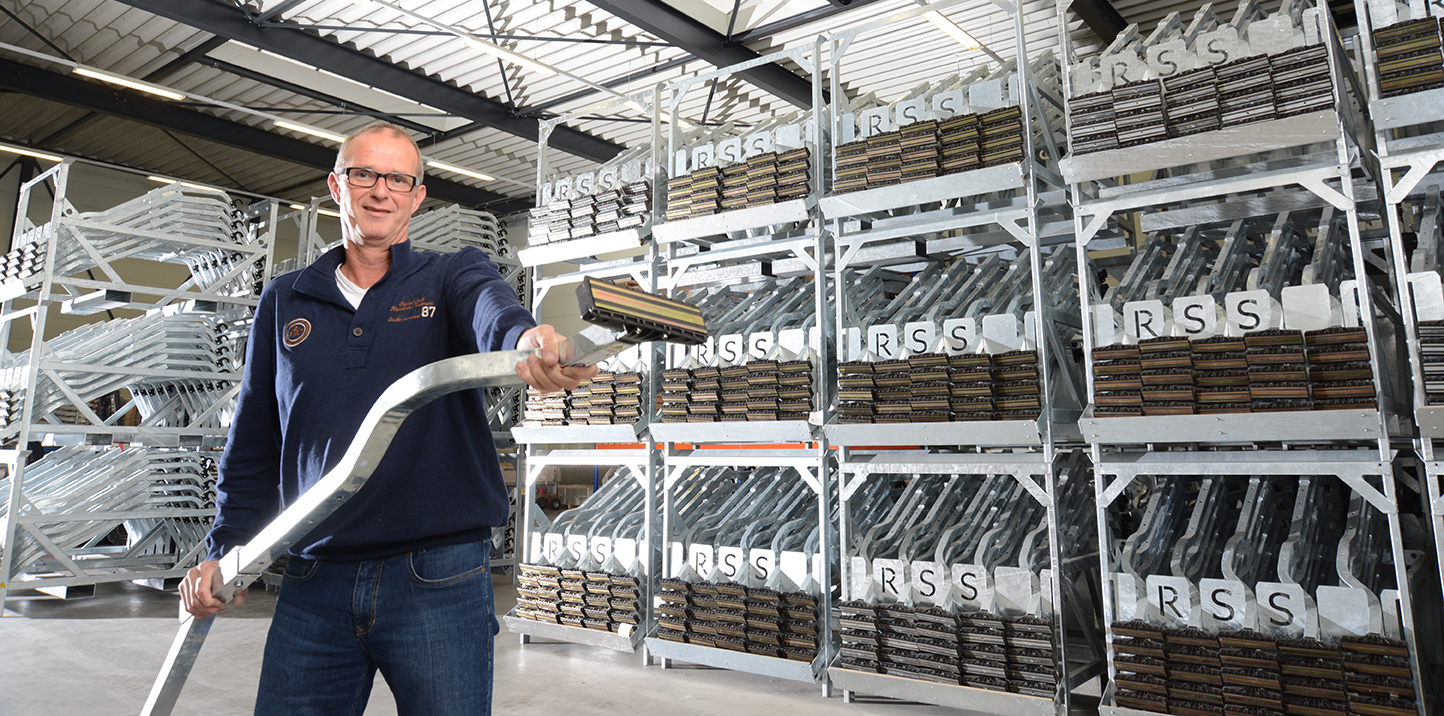
Despite the fact that the Rail Safety barrier magnetic technology has been introduced and certified only a few years ago, we are proud to share the positive findings with some of our key customers.
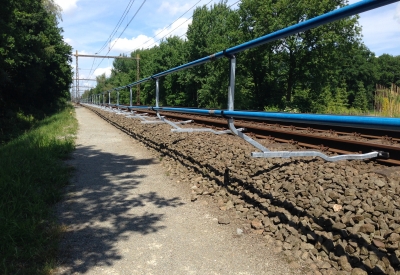
Paul Scapens, CEO and President, Innovative Railway Safety Ltd
Read the casePaul Scapens, CEO and President, Innovative Railway Safety Ltd
Can you briefly describe your company?
Innovative Railway Safety Ltd’s objective is to invent and source innovative products that are used at the GB, Eire and European Railway Infrastructure, with the aim of producing a more environmentally sustainable and safer place to work. We work closely with innovative companies that provide practical, cost effective solutions to both existing identified hazards and those as yet not envisaged but come to light with new technology and working practices.
When was your first contact with Rail Safety Systems?
In our continuous search for innovative products, we came across a Dutch company, Rail Safety Systems B.V. who were introducing a revolutionary magnetically attached Safety Barrier System. I joined them at the Rail-Tech Europe trade fair 2011 in Amersfoort Netherlands, where the product won the European Gold Award for Innovation. I was convinced that this was an excellent solution for the market in Great Britain and Eire as well as an opportunity to develop new products utilising their unique magnetic technology (e.g.: Lookout protection Kits, TSR (Temporary Speed Restriction) Boards, Points Run-through Signs etc. The rest, as we say, is history.
What was your first impression of the RSS Magnetic Barrier?
My first reaction was the same as everybody else’s when they first see it – “I wish I’d thought of that” – it’s so easy and obvious – only two components. I was immediately impressed by its simplicity in attaching to the rail; the fact that no tools were required; the speed of erection allows the opportunity to erect and dismantle in ‘line-blockages’ rather than ‘full possessions’- (5men can erect 102m in 15minutes); it’s light and easily carried; with no ballast removal required, it means no Silica ballast dust or pathogens (e.g. Weil’s disease, Leptospirosis etc.) are generated making for a safer working environment; the interlocking the Glass Reinforced Plastic handrails provide a continuous Safety Barrier offering maximum security for operatives working closely to the railway line with train speeds of up to 145mph. In use, it saves Time and as a consequence Money - who would not be interested in this?
Do you have an example where the system has effectively been used?
Some 24 Km are now in daily use on the GB and Eire infrastructure, so both Network Rail and its Contractors are investing in this new technology and deriving the benefits, - saving time and money. A customer of ours, J. Murphy & Sons Limited, has utilised the Rail Safety System Magnetically Attached Barrier on the Ladbrook Lane project in Wiltshire. This project involved the demolition and reconstruction of a bridge as part of the Great Western Electrification Program. The barrier provided extremely effective protection and enabled work in close proximity to the track to be completed 75% faster compared to traditional barrier systems, resulting in a significant savings – “£1500.00 over traditional Safety Barrier Systems”. See this link.
Amey Rail, working with Network Rail on the GWEP (Great Western Electrification Project) were similarly impressed and issued a ‘Share with Pride’ passing on their positive experiences in using the Safety Barrier. See this link.
What else can we expect of this cooperation?
Our engineers work closely with the engineers of RSS on other ‘new’ innovations, all based around the innovative and patented magnetic system technology. We are in frequent contact with large railway operators, Network Rail amongst them, seeking additional opportunities and will introduce these as we receive approval. There are exciting new products which are in the process of certification and parallel testing and are close to being launched in the GB & Eire and European Markets. For obvious reasons we cannot go into too much detail right now.
Philip Glanz, Senior Area Manager, Deutsche Bahn
Read the case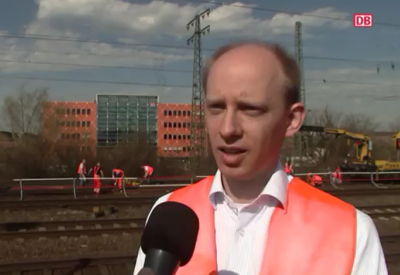
Philip Glanz, Senior Area Manager, Deutsche Bahn
Click on the play icon (on the left) to watch the full interview or the general Deutsche Bahn Practice video.
Interview with Philip Glanz.
My name is Philip
Glanz and I'm the Senior Area Manager for track maintenance here
in the PD Hamm. In the track area, we are responsible for repair and
maintenance of the rail systems. We inspect them and replace major
components of rail points.
Why did you choose RSS?
For us there were
several reasons. Firstly the cost-effectiveness next to safety. The
RSS system may not be the cheapest one on the market, but we save
approx. EUR 1000 per shift every time we use it. It is a safe
alternative opposed to automatic warning systems that do not prevent
employees from walking onto the neighbouring track, and exactly that
is made possible by the fixed barriers.
What do the
savings consist of?
We bought these fixed barriers
as DB and they now belong to the depot. When we carry out normal
safety procedures we have a service provider who takes over the
safety installations for us. We are now saving those
costs.
About the RSS system?
The RSS
system is a fixed barrier attached to the rail with a magnet. So
when compared with conventional fixed barriers, I no longer need to
clear the area in which I am installing the fixed barrier from
ballast and attach the fixed barrier to the rail. It's much
faster, is more simple and I can do it from outside the rail area.
That was impossible up to now.
How long does it
take to build the system?
Once the employees have
got the hang of it we can manage about 10 metres per minute. So I
can build a fixed barrier like the one you see behind me in 5 to 10
minutes. That has been impossible up to now.
Licensing
of the RSS system.
It is often the case, of course,
that we are wary of anything new. The biggest risk, or the biggest
question raised is: Can a magnet actually hold? Does the system
work? Will it not be torn off? What will happen if I lean against
it? Is the system stable?
RSS provided us with 30 metres for 2
months so we could test it here last year . We tested it extensively
with the team; the employees could try it out themselves right here.
At the end of the day we realised that the more of the system we
build, and the longer it is, the more stable it becomes. To that
extent, all the questions or concerns we had raised were actually
history.
The experience of employees with
RSS
When I talk to the team today, they usually
say: It works, it's relatively simple, I would never have
thought so, why didn't we do this before?
Why did you not choose RSS before?
There was no
comparable system before.
distortion of the balast bed.
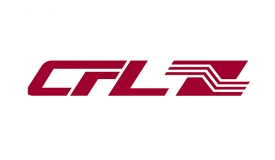
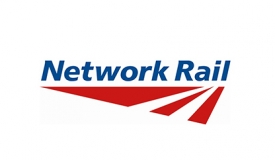

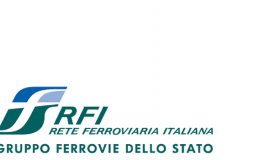
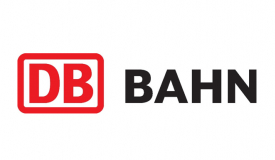

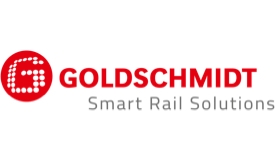

High & Safe, Heli Group | Belgium
Vantegemstraat 9, 9230, Wetteren
Belgium
Stephan de Witte
+32 (0)471 353 571
HELI Equipment | Luxembourg
Vantegemstraat 9, 9230, Wetteren
Belgium
Stephan de Witte
+32 (0)471 353 571
Thermit Welding (GB) Ltd
87 Ferry Lane, Rainham, Essex, RM13 9YH
United Kingdom
Taylor Edgell
+44 (0)1708 522626
Kyocera Senco Schweiz AG
Tödistrasse 48, 8812, Hünenberg
Switzerland
Richard Roellin
+41 043 244 10 50
Orgo-Thermit Inc.,
3500 Colonial Drive North, US - NJ08759 Manchester
United States of America
Mr. Anthony Cusmano
+1 732 657 5781 X36
SOLYTEK
16, RUE DE L'AVENIR, 14650, CARPIQUET
France
Elie Levy
+ 33 (0) 2 31 57 57 38
Thermit Australia Pty. Ltd.
P.O. Box 76, NSW 2250, KARIONG
Australia
Steven Boyd
+61 (2) 4340 4988
Thermit do Brasil Ind.e Com Ltda.
Rua Sargento Silvio Hollenbach 601, 21530-200, Rio de Janeiro
Brazil
Wellington Silva
+55 2138183823
Thermit Italiana s.r.l.
Via Sirtori 11, 20017, Rho-Milano
Italy
Gianni Sarti
+39 02 931 80 932
Rail Safety Systems BV | The Netherlands
Kaldenkerkerweg 28C, 5913 AE, Venlo
The Netherlands
Jan Bakker
+31 0857821601
Rail Safety Systems BV | Germany
Kaldenkerkerweg 28C, 5913 AE, Venlo
The Netherlands
Hans Klopstra
+31 0641937443
Rail Safety Systems BV | Austria
Kaldenkerkerweg 28C, 5913 AE, Venlo
The Netherlands
Hans Klopstra
+31 0641937443
Rail Safety Systems BV | Rest of the World
Kaldenkerkerweg 28C, 5913 AE, Venlo
The Netherlands
Jan Bakker
+31 0857821601
EEP Vertrieb GmbH.
Alte Bottroper Straße 120, D-45356, Essen
Germany
+49 (0)201 86153-0
High & Safe, Heli Group | Belgium
Vantegemstraat 9, 9230, Wetteren
Belgium
Stephan de Witte
+32 (0)471 353 571
HELI Equipment | Luxembourg
Vantegemstraat 9, 9230, Wetteren
Belgium
Stephan de Witte
+32 (0)471 353 571
HELI Equipment | The Netherlands
Vantegemstraat 11, 9230, Wetteren
Belgium
Bart Cooman
+32 93688080
SGB Securitas Gleibausicherung
Paul Lincke Srtasse 2, 66793, Saarwellingen
Germany
Marcus Burkhardt
+49 6838974380
SGB Securitas Gleibausicherung | Austria
Paul Lincke Srtasse 2, 66793, Saarwellingen
Germany
Marcus Burkhardt
+49 6838974380
Rail Safety Solutions Ltd
The Atlas Building, 16 Portland Street, B6 5RX, Aston, Birmingham
United Kingdom
Mr Sean Harrison
+121 366 8800 | +7880 035866
TPA Portable Roadways
Dukeries Mill, S81 7DJ, Claylands Avenue, Worksop
United Kingdom
+870 240 2381
Rail Safety Systems BV (RSS) is pleased to announce that Thermit Welding (GB) Ltd, as representatives of the Goldschmidt Thermit Group, has acquired the exclusive distribution rights in the UK and the Republic of Ireland for the full range of rail related products manufactured by RSS in the Netherlands. This has become effective as of January 1, 2020.
RSS will be working closely with Innovative Railway Safety (IRS) and Thermit Welding (GB) Ltd over the coming weeks and Mr. Scapens will be acting as a consultant to Thermit Welding (GB) Ltd. to ensure a smooth transitional period.
As part of the international Goldschmidt Thermit Group, already the world’s largest distributor of RSS products, we are very confident that Thermit Welding (GB) Ltd. can satisfy all current and future needs for RSS products in the UK and the Republic of Ireland. Building on the excellent work done by IRS, RSS is convinced that the transfer to Thermit Welding (GB) Ltd. will develop and improve its services to give customers and prospects the best possible experience.
RSS is extremely appreciative of the dedication of Mr. Paul Scapens for more than a decade and would like to thank him for the excellent work done in contributing towards realizing growth of the Rail business in general and the UK and Republic of Ireland market in particular.